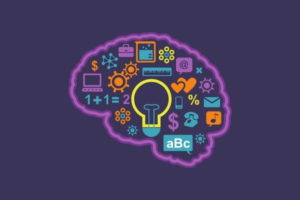Have you ever needed to memorise something, a presentation, or facts and figures for a test? You probably tried all sorts of techniques to try and retain the information, perhaps cue cards, drawing diagrams or just merely reading information over and over!
We all have a unique mix of learning styles and preferred ways of collecting ideas. Some people have a dominant type of learning and rely on only 1 – 2 techniques. Others may use different techniques in different situations. There is no correct or ideal mix, nor are learning styles fixed. You can develop the ability to pick-up other learning styles, as well as further develop techniques that you already use. You may be surprised to hear that your DISC Style may also indicate the learning style preference that best suits you.
The DISC Personality Types have different preferences and priorities when going through the learning process. We can break the four styles into other combinations, much like the four-quadrant model, to learn about each DISC profile and learning style.
How the DISC Styles Learn
The High D Profile
The D DISC learning styles are high action-orientated learners. Practical situations or simulations are a great learning technique for D personality types. They thrive on a challenge and are likely to question the trainer, topic or methods. D styles prefer to learn independently and often through the process of trial and error. D styles are all about the ‘WIFM’ (what’s in it for me?). You’ll often hear them asking ‘what’ questions. D learning styles will want to know the schedule and learning expectations in advance of workshops or courses.
The High I Profile
The I DISC learning styles are low structure learners; they prefer to learn without set processes or structure. They learn by sharing and through group exercises, especially those that allow them time to discuss and socialise. The ideal learning environment for the I style is one that involves group participation, where they have the opportunity to express themselves and discuss with others. I styles also require a lot of visual aids. I styles ask the ‘who’ questions. You’ll hear them ask ‘who can I discuss this with?’ I styles prefer not to have a set framework for learning. Therefore, I personality types are usually quite receptive to new ideas, theories and methods of learning. I learning styles prefer short, fast-paced, and highly stimulating methods of learning.
The High S Profile
The S DISC learning styles are non-action oriented learners. S styles are opposite to the D style of learning. S personality types prefer to listen or watch as a way of learning, rather than getting involved in activities. S styles learn by understanding each side or each approach. S styles may become confused if new knowledge contrasts to their current understanding. They take their time to collect and think about the information. S learning styles prefer to learn in logical steps. You’ll often hear them asking ‘how’ questions like ‘how do we go about this?’ S styles are receptive learners; they like to observe before applying the information in a practical setting.
The High C Profile
The C DISC learning styles are high structured ‘deep learners’ and require lots of time to think and collect information. They may need assistance to help them frame knowledge with their current understanding. C personality types are the most precise and analytical of the DISC profiles. They appreciate having a learning guide and staying on schedule. C learning styles tend to ask ‘why’ questions, ‘why are we learning this way?’ ‘Why are we expected to learn this?’ Facts, statistics and other data are essential to the C styles. They like to ask questions to ensure they have the correct information the first time.
Understanding the Different DISC Learning Styles
Understanding the different DISC profiles and learning styles is vital to maintaining the best learning environment for company employees. Some form of training or coaching takes place in most workplace environments. Just as workplaces have a diverse range of employees, they also all have different learning styles. These DISC learning styles provide an organisation’s leaders with valuable information to maximise time spent training and onboarding new employees as well as developing the existing workforce.
DISC Learning Styles Assessment
The DISC Learning Styles Assessment reveals our natural DISC style, our general learning preferences, learning requirements, our motivators, and what we need from a manager/leader. The DISC Learning Styles Assessments helps us understand how we tend to approach learning. It aims to help us understand our preferred DISC learning style as well as consider the style preferences of other DISC styles as we share information and help others learn.
By understanding our learning preferences and the preferences of others, we can ensure we are setting up our learning experiences to support the most effective learning possible. For example, suppose I know that I am a high-control learner who learns by experimenting and discovering. I can create the best environment for me by creating situations where I can practically apply information and experiment with my knowledge. If I couple this with the insights from my motivators, I can create an environment that best motivates me. For example, I am more motivated in group situations where I can participate in teams. Encouragement of my work also motivates me.
By recognising my learning needs and motivators and preparing for them, I can set myself up for learning success.
When to use the DISC Learning Styles Assessment
The DISC Learning Styles Assessment has a range of applications, including in coaching, training, employee development, personal and professional development, sales, service, and more. Any industry or organisation, no matter the size, requires some amount of training and learning. Insights from the DISC Learning Styles Assessment apply to any situation where there is an element of training, even when onboarding a new employee.
The value of the DISC learning styles stretches beyond an individual’s learning. The learning styles are also useful when facilitating learning with others. We all become teachers and instructors at some point. The DISC learning styles model is helpful in situations where any type of learning transfer takes place.




